Finding The Spot - Locating Kingfish
I have spent many days live-baiting yellowtail kingfish in the Coromandel area around all the little rocks and small islands that jut out of the water and time and time again have come up empty handed.
My general rule of thumb now is to fish the big islands and the mainland.
I have found that these areas with stronger currents seem to hold most of the big kingfish populations.
After much exploring, we have cut out half the islands leaving only the bigger ones.
Around these areas it pays to try and find deep water with a bit of a pinnacle, most of them will produce fish but only at certain times of the day.
It's not uncommon to see the same fish every two to three hours and on the second or third sighting, after passing your bait several times and showing no interest, it will then decide to nail your live bait.
Finding this bite time is a must and keeping a kingfish diary could be very useful for this.
If you don't want to spend all day in one place, and once you've learned the islands, you can go from spot to spot knowing that the king fish will be there at certain times.
Also, I have noticed that the islands seem to hold large numbers of smaller fish while the mainland holds the bigger fish with fewer juveniles.
While most of the Coromandel mainland tends not to look as productive as the islands, personally I have caught 70% of my kings there.
Again I should stress, it's necessary to learn the times each point, pinnacle, or reef fishes well.
You should find that these bite times are pretty regular, so each time you go it should produce good fish depending on the tides.
I have also found that many of the fish in this area appear to be resident, if you fish a particular spot one day it sometimes takes two to three days for the fish to get back into their routine after being spooked.
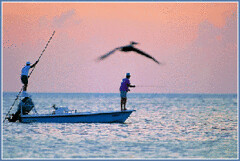 Fishing tackle is used to get your bait or lure to the fish. You don't need a lot of equipment to begin fishing. In fact, it's a good idea to begin with basic, simple tackle. You can try more difficult tackle after you've mastered some basic skills.
Fishing tackle is used to get your bait or lure to the fish. You don't need a lot of equipment to begin fishing. In fact, it's a good idea to begin with basic, simple tackle. You can try more difficult tackle after you've mastered some basic skills.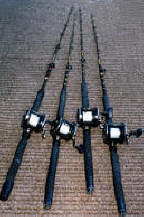
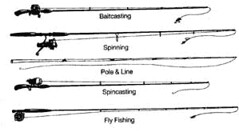
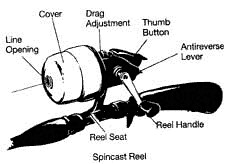
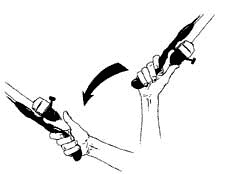
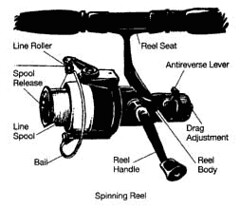
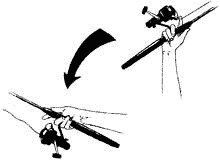
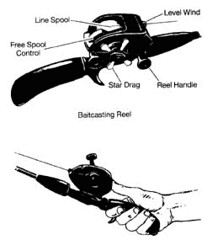 Drag
Drag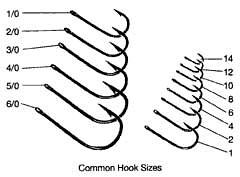
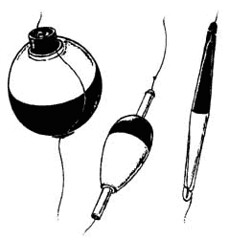
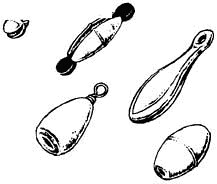
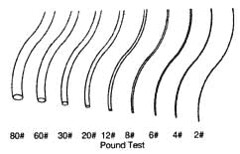
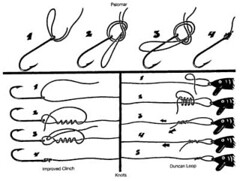
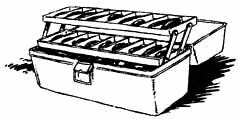
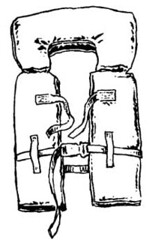
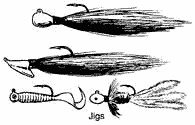
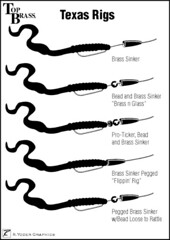 The Texas Rig is a technique used for fishing soft plastic lures. It involves a bullet weight being threaded onto the line first followed by an optional glass bead, and then the line is secured to a hook, usually an offset worm hook.
The Texas Rig is a technique used for fishing soft plastic lures. It involves a bullet weight being threaded onto the line first followed by an optional glass bead, and then the line is secured to a hook, usually an offset worm hook.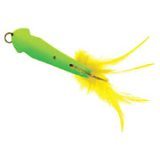 A spoon lure is, in terms of sport fishing an oblong, concave metal piece resembling a spoon. The spoon lure is mainly used to attract fish by reflecting light and moving randomly. The spoon lure was invented by Julio T. Buel in about 1848. The design of the spoon lure is simple; an oblong, concave metal piece with a shiny chrome or paint finish, and a single or treble hook on the end.
A spoon lure is, in terms of sport fishing an oblong, concave metal piece resembling a spoon. The spoon lure is mainly used to attract fish by reflecting light and moving randomly. The spoon lure was invented by Julio T. Buel in about 1848. The design of the spoon lure is simple; an oblong, concave metal piece with a shiny chrome or paint finish, and a single or treble hook on the end. 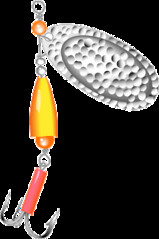
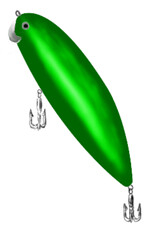
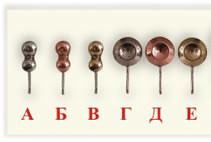
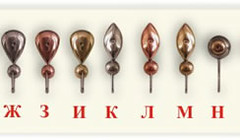
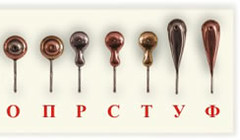
 Copper, Gold, Silver, or combination of two metals, that provides better attraction to fish.
Copper, Gold, Silver, or combination of two metals, that provides better attraction to fish.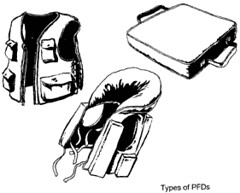
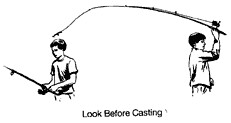
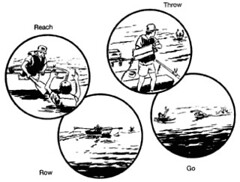 Reach-throw-row-go is a method of rescuing a person who falls overboard or an angler or swimmer in trouble.
Reach-throw-row-go is a method of rescuing a person who falls overboard or an angler or swimmer in trouble.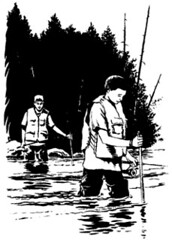 There are several rules you should follow for safe wading.
There are several rules you should follow for safe wading.